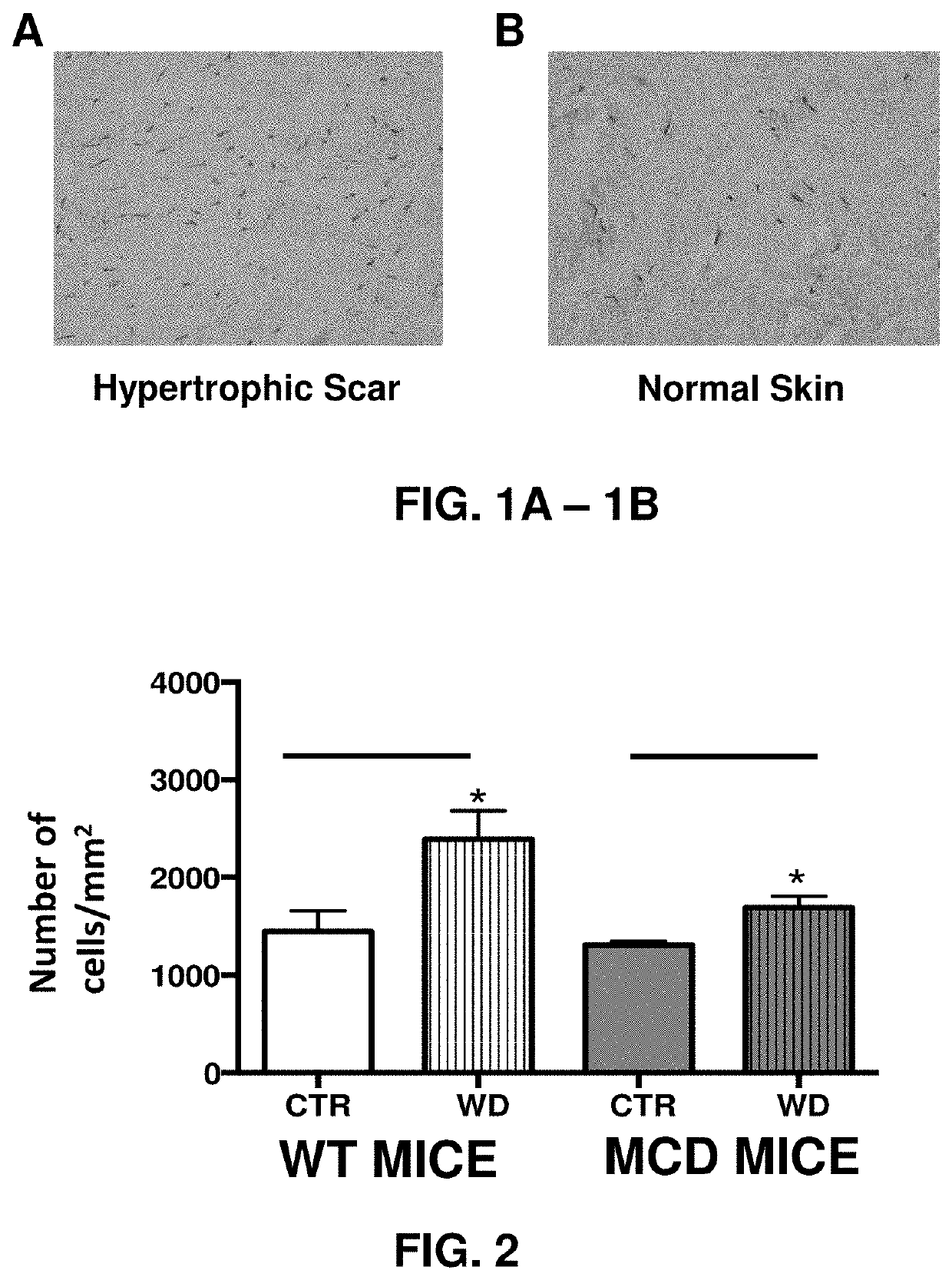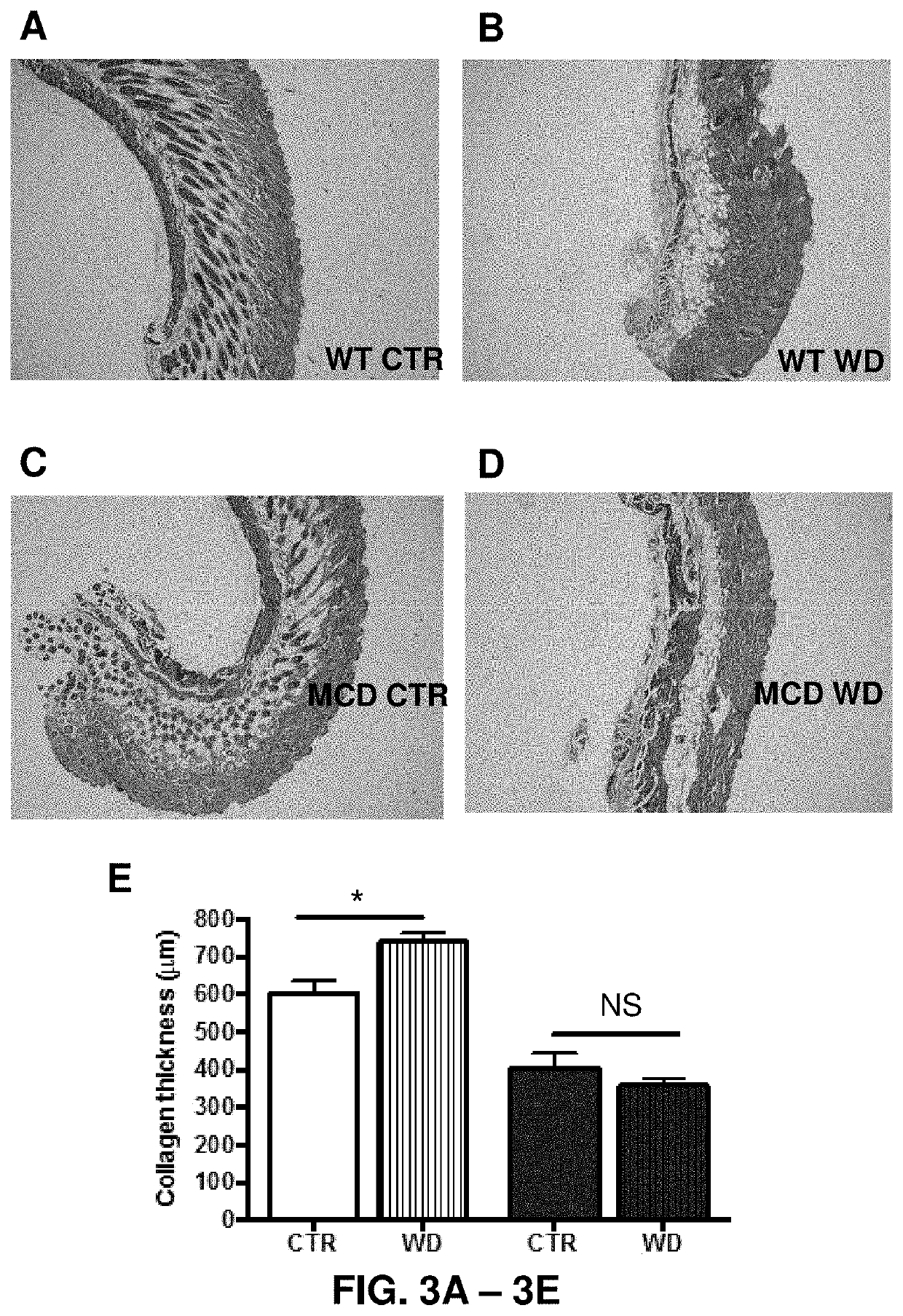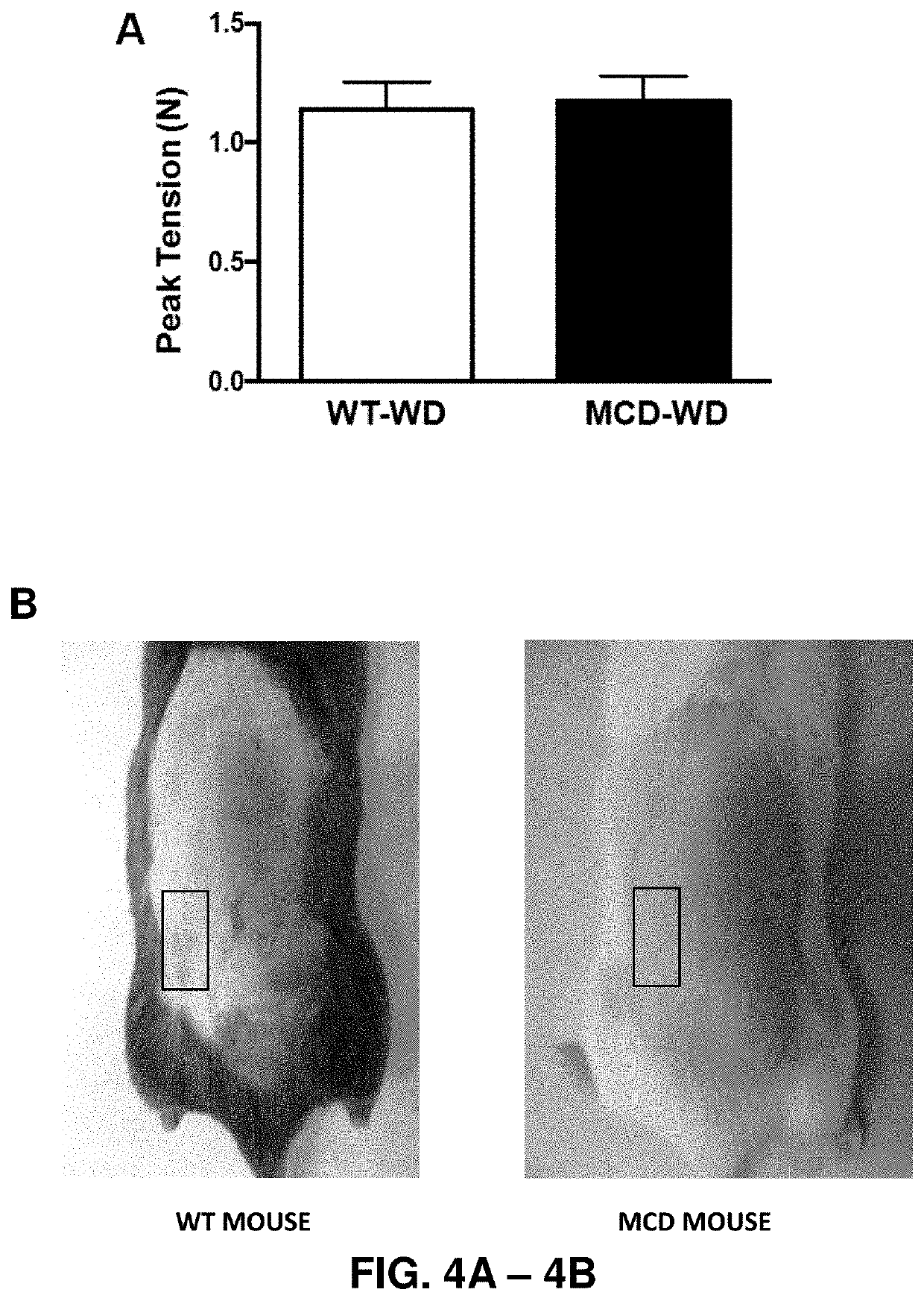Methods for reducing abnormal scar formation
a scar formation and abnormality technology, applied in dermatological disorders, organic active ingredients, drug compositions, etc., can solve the problems of negative quality of life, limited effectiveness of current treatments, and associated with significant side effects, and achieve the effect of reducing scar collagen abundance, scar width, scar tissue contracture, and effective amount of mast cell stabilizer
- Summary
- Abstract
- Description
- Claims
- Application Information
AI Technical Summary
Benefits of technology
Problems solved by technology
Method used
Image
Examples
example 1
Materials and Methods
Animal Models of Scarring
[0141]As there are no murine models for hypertrophic or keloid scarring, the inventors relied on a classic rodent incisional wound model consisting of a longitudinal para-vertebral incision 1-2 cm long through the entire thickness of the skin and cutaneous muscle. Wounds (WD) and size matched pieces of dorsal dermis (CTR) were excised and processed for light and polarized light microscopy: fixation, embedding, sectioning and stained with hematoxylin-eosin (inflammatory cells) and Gomori Trichrome (collagen staining), tensile strength measurements and qPCR.
[0142]In some experiments, a drug was delivered locally and directly to the wound. In some embodiments, the drug was impregnated in the wound closure material, silk suture. In some experiments, the drug was eluted into the wound during wound healing leading to closure and scar formation. Wound healing was monitored over 14 days.
Contraction Assay
[0143]Evaluation of fibroblasts contractil...
example 2
Mast Cells are Involved in Scar Tissue Formation
[0145]To determine the contribution of mast cells to incisional wound healing and scar formation experiments were performed with mast-cell-deficient WBB6F1-W / Wv (MCD) mice and their congenic controls WBB6F1-+ / +W / Wv (WT) or the C57bl / 6 mouse strain and a classic rodent incisional wound model consisting of a longitudinal para-vertebral incision 1-2 cm long through the entire thickness of the skin and cutaneous muscle. Mast cells were found abundantly in hypertrophic scars (FIGS. 1A and 1B).
[0146]Mast-cell-deficiency lessened the inflammatory response to an incisional wound as shown at the 7-day time point compared to that measured in the wound of the congenic control wild-type mice (FIG. 2). Mast-cell-deficiency also decreased the scar width and collagen content of the scar as determined by Gomori stain (blue) in dermal layer-matched fixed sections of wound closure (scar) at the 14-day time point (FIGS. 3A-3E).
[0147]Peak tension measured...
example 3
Mast Cell Stabilization Prevents Scar Tissue Formation
[0148]Using wild type C57bl / 6 mice, wound healing experiments were next performed where the incision was sutured with silk imbedded with ketotifen, a mast cell stabilizer. This way the drug could be delivered continuously and locally during wound healing.
[0149]Treatment with ketotifen lessened the inflammatory response to the incisional wound as shown for day 7 (FIG. 5). At day 14, scar width was significantly less in the mice treated with ketotifen (FIG. 6). The relative abundance of newly synthesized collagen III mRNA in excised wound scar (14-day) was also significantly less in the drug group compared to untreated, as determined by q-PCR (FIG. 7). This finding was further confirmed by analyzing excised wound scar with birefringence microscopy. The birefringence of newly synthesized collagen III (green) differs from pre-existing collagen I (red) and is less abundant in wound scar compared to untreated wound scar (FIG. 8A). This...
PUM
| Property | Measurement | Unit |
|---|---|---|
| Width | aaaaa | aaaaa |
Abstract
Description
Claims
Application Information
 Login to View More
Login to View More - R&D
- Intellectual Property
- Life Sciences
- Materials
- Tech Scout
- Unparalleled Data Quality
- Higher Quality Content
- 60% Fewer Hallucinations
Browse by: Latest US Patents, China's latest patents, Technical Efficacy Thesaurus, Application Domain, Technology Topic, Popular Technical Reports.
© 2025 PatSnap. All rights reserved.Legal|Privacy policy|Modern Slavery Act Transparency Statement|Sitemap|About US| Contact US: help@patsnap.com



